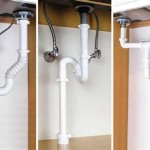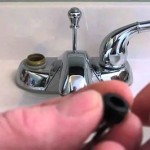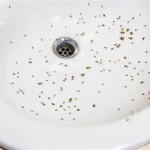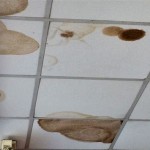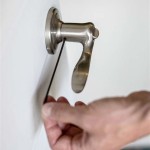Can You Use Vinyl Matt In Bathrooms? Unpacking the Suitability of This Popular Paint Finish
Vinyl matt emulsion paint is a widely favored choice for interior walls due to its sophisticated, non-reflective finish and ease of application. However, its suitability for use in bathrooms, environments characterized by high humidity and fluctuating temperatures, is a question frequently raised by homeowners and decorators alike. The answer is nuanced and depends on several factors, including the specific type of vinyl matt paint, the bathroom's ventilation, and the preparation undertaken before application.
The primary advantage of vinyl matt paint lies in its ability to conceal imperfections in walls. Its flat finish minimizes light reflection, making it ideal for masking minor dents, scratches, and uneven surfaces. This characteristic is especially beneficial in older homes or bathrooms where surface imperfections are more prevalent. Furthermore, vinyl matt paint is generally easier to apply than glossier alternatives, offering good coverage and a smooth, even finish with relatively little effort. Its water-based nature also contributes to lower VOC (volatile organic compound) emissions, making it a more environmentally conscious choice compared to some solvent-based paints.
However, the inherent properties of vinyl matt paint also present potential drawbacks for bathroom applications. Its porous nature makes it more susceptible to moisture absorption than more durable, moisture-resistant finishes. Prolonged exposure to humidity can lead to issues such as mold and mildew growth, peeling paint, and water stains. The lack of sheen also means it is less easy to clean than paints with a higher gloss level, making it more challenging to remove splashes, soap scum, and other bathroom grime.
Key Point 1: Understanding Vinyl Matt Paint Composition and Variations
Not all vinyl matt paints are created equal. The “vinyl” component refers to the binder used in the paint's formulation, which affects its adhesion, durability, and overall performance. Some vinyl matt paints are specifically formulated with enhanced moisture resistance and anti-mold properties, making them more suitable for humid environments like bathrooms. These specialized formulations often include additives that inhibit the growth of mold and mildew and improve the paint's ability to withstand repeated cleaning.
It is crucial to carefully examine the product specifications and label before purchasing vinyl matt paint for bathroom use. Look for phrases such as "suitable for bathrooms," "moisture-resistant," "anti-mold," or "washable." These indicators suggest that the paint has been designed to perform better in humid conditions than standard vinyl matt emulsions. Furthermore, consider the reputation of the paint brand and research reviews from other users who have applied the product in similar settings.
The pigment content of the paint also plays a role in its overall performance. Higher-quality paints generally have a higher pigment concentration, resulting in better coverage and color retention. This is particularly important in bathrooms, where frequent cleaning can gradually wear away the paint film. Choosing a high-quality vinyl matt paint with good pigment content can help ensure a longer-lasting and more aesthetically pleasing finish.
Key Point 2: Importance of Proper Bathroom Ventilation
Regardless of the type of paint used, adequate bathroom ventilation is paramount to mitigating the risks associated with moisture exposure. Inadequate ventilation allows humidity to build up, creating a breeding ground for mold and mildew. This can not only damage the paint but also pose health risks to occupants.
Ideally, bathrooms should be equipped with a properly functioning extractor fan that effectively removes moist air from the room. The fan should be used during and after showering or bathing to minimize humidity levels. The size and efficiency of the fan should be appropriate for the size of the bathroom. Building codes often specify minimum ventilation requirements for bathrooms, ensuring sufficient airflow to prevent moisture buildup.
In addition to an extractor fan, natural ventilation can also contribute to a drier bathroom environment. Opening windows after showering or bathing allows fresh air to circulate and helps to dissipate moisture. However, this is only effective when weather conditions permit and the outdoor air is less humid than the indoor air.
Even with good ventilation, it is essential to be proactive in managing moisture levels. Wiping down wet surfaces after showering or bathing can help to prevent water from lingering on walls and ceilings, reducing the risk of moisture damage. Fixing any leaks promptly is also crucial to prevent water from seeping into walls and causing further deterioration.
Key Point 3: Preparing the Surface for Vinyl Matt Paint in Bathrooms
Proper surface preparation is essential for ensuring that any paint, including vinyl matt, adheres correctly and provides optimal protection. This is particularly important in bathrooms, where the paint is likely to be exposed to higher levels of moisture and humidity.
The first step is to thoroughly clean the walls to remove any dirt, grease, soap scum, or mold. Use a mild detergent solution and a sponge or cloth to scrub the surfaces clean. For areas affected by mold or mildew, use a specialized mold and mildew remover to kill the spores and prevent regrowth. Ensure that all cleaning solutions are thoroughly rinsed off and the walls are completely dry before proceeding.
Next, inspect the walls for any damage, such as cracks, holes, or peeling paint. Fill any cracks or holes with a suitable filler and sand the surfaces smooth. Remove any loose or flaking paint with a scraper or sandpaper. Feather the edges of the repaired areas to create a seamless transition with the surrounding paint.
Priming the walls is a crucial step in ensuring proper adhesion and preventing moisture penetration. Use a high-quality primer that is specifically designed for use in bathrooms. A good primer will seal the surface, create a uniform base for the paint, and improve its resistance to moisture. Apply the primer evenly, following the manufacturer's instructions.
Finally, consider applying a sealant to areas that are particularly susceptible to moisture, such as around the shower, bathtub, and sink. A good-quality sealant will create a waterproof barrier that prevents water from seeping behind the tiles or into the walls. Ensure that the sealant is compatible with the paint and follow the manufacturer's instructions for application.
In summary, while standard vinyl matt paint is not inherently the most suitable choice for bathrooms due to its porous nature, careful consideration of the paint's formulation, diligent attention to ventilation, and thorough surface preparation can increase its suitability. Opting for moisture-resistant vinyl matt paints, ensuring adequate ventilation, and meticulously preparing the surfaces are all essential steps for achieving a durable and aesthetically pleasing finish in a bathroom environment. Ultimately, the choice of paint finish should be a well-informed decision based on a comprehensive assessment of the bathroom's specific conditions and the desired level of performance.

How To Cover Ugly Al Bathroom Floors With A Vinyl Mat The Homes I Have Made

How To Cover Ugly Al Bathroom Floors With A Vinyl Mat The Homes I Have Made

How To Cover Ugly Al Bathroom Floors With A Vinyl Mat The Homes I Have Made

How To Cover Ugly Al Bathroom Floors With A Vinyl Mat The Homes I Have Made

How To Cover Ugly Al Bathroom Floors With A Vinyl Mat The Homes I Have Made

How To Cover Ugly Al Bathroom Floors With A Vinyl Mat The Homes I Have Made

Bathroom Flooring Vinyl Multipanel

Best Bathroom Paint For Your Home Decorator S Forum

What You Need To Know When Choosing Bathroom Paint The Showroom

Best Bathroom Paint For Your Home Decorator S Forum
Related Posts
